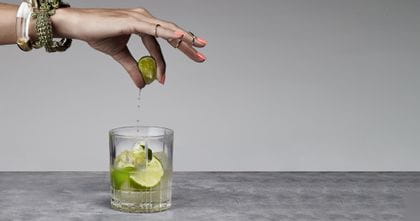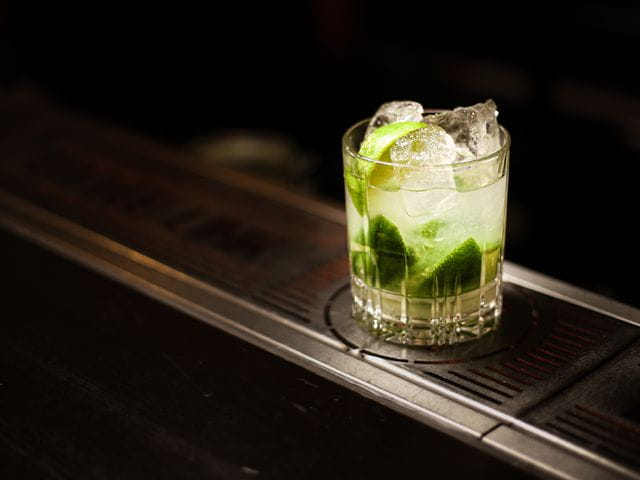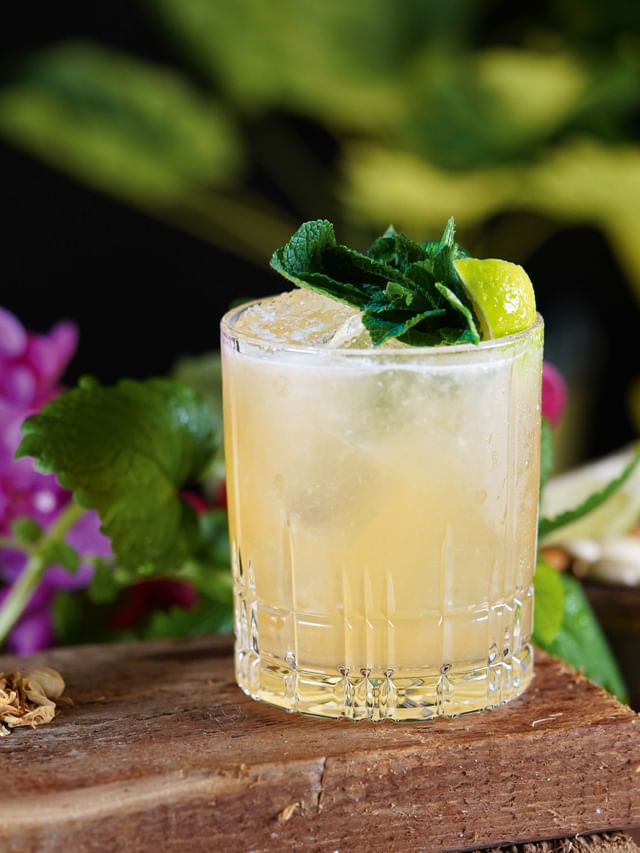Exploring Brazil’s best
Talking Cachaça

Some countries and regions share a clear association with certain drinks. Mexico has tequila, Scotland has scotch, and the Caribbean has rum. For Brazil, that drink is cachaça.
Cachaça might not be the first drink that springs to mind when you mention spirits to people, but as Brazil's national spirit and the key ingredient in the country's national cocktail, we figured more people should know a little more about it.
The history of cachaça
Cachaça (pronounced cah-shah-sah) goes back a long way - approximately 500 years, in fact. In the early 16th century, Portuguese colonizers introduced sugarcane to Brazil to produce sugar. Some years later, enslaved people working on plantations discovered that the foam produced from boiling sugarcane juice (which they named cachaça) could ferment into a potent alcoholic beverage.
While cachaça was initially drunk primarily on plantations, by the 17th century, producers had refined their craft, which saw cachaça's popularity spread across Brazil. Gradually, it became a significant part of Brazilian culture and celebrations - so much so that the Portuguese banned its production, distribution, and sale of cachaça in 1635. It is thought that this move was due to fears that the popularity of cachaça, which was cheap and locally produced, would be bad for their economy - so it got the chop. Not letting up, cachaça producers revolted against colonial authorities in protest against the ban, leading to the restriction being reversed a few decades later, which allowed cachaça production to resume.
Following the overturning of the ban on cachaça sales, production of the spirit grew and was further boosted after Brazil gained independence from Portugal in 1822. Today, approximately 85 million cases of cachaça are consumed each year, making it one of the ten most drunk spirits in the world. Consumption still occurs mostly in Brazil, but the spirit has increased in number of exports in recent years - particularly to the United States, Paraguay, Germany, France, and Portugal. So watch this cachaça-shaped space!

What does cachaça taste like?
Cachaça can display a wide variety of qualities, ranging from a robust, earthy profile to fruity and floral character. Ultimately, a cachaça's characteristics depend on numerous factors, including production style and the terroir of the region where the sugarcane is grown.
Regarding the final product, cachaça has two main styles that contrast quite considerably in look, flavor, and use: white cachaça and aged cachaça.
- White cachaça is bottled either straight after distilling or after up to a year of aging in wooden barrels. This process of zero or minimal aging results in a clearer spirit that is often used in cocktails. One example of white cachaça is industrial cachaça, which is made in very high-volume column stills. This results in a clean, sharp cachaça that lacks complexity in its aroma and flavor.
- Aged cachaça is left to sit in wooden barrels for an extended period of time after distilling - often for up to three years, but it can be as long as 15 years in the case of extra premium cachaças. Aged cachaça more often uses artisanal production methods, meaning it has been produced in small batches using traditional methods. These types of cachaça are generally considered a higher standard of spirit due to having more complex and refined flavors and aromas. They are therefore often enjoyed neat so they can best express their qualities and characteristics.
Cachaça vs rum: key differences
Cachaça is sometimes referred to as 'Brazilian rum' due to both spirits being made from sugarcane. However, there are some fundamental differences between the two spirits:
- Rum can be made from fresh sugarcane juice, but it is generally made from sugarcane byproducts - such as molasses. Cachaça, in contrast, must be distilled from raw sugarcane.
- Cachaça must be made in Brazil, whereas over 80% of global rum is produced in the Caribbean. In the past, cachaça would sometimes be labeled as Brazilian rum, but this hasn't been permitted since 2013.
- The use of fresh sugarcane gives cachaça grassy, vegetal notes, while rum often has a sweeter, vanilla-like profile.
- Cachaça is aged in various types of wood, including native Brazilian woods like amburana and jequitibá, which impart unique flavors into the spirit. Rum is also aged in wooden casks, but it is most commonly aged in ex-bourbon American white oak barrels.
- Many notable rum-producing countries require a minimum barrel-aging time for rum, whereas white cachaça can be bottled without any barrel aging.

How to enjoy your cachaça
The iconic caipirinha
No discussion of cachaça would be complete without mentioning the caipirinha - Brazil's most famous cocktail. First developed in the late 1800s or early 1900s (depending on which origin story you believe), this cocktail has become especially popular in the Americas, helping to make cachaça better known. This simple, classic cocktail is made by muddling lime wedges with sugar, adding white cachaça, and serving it over ice, creating a refreshing, tangy, and sweet cocktail that is particularly popular during the hot summer months in Brazil.
Check out our caipirinha recipe blog for the full details and recipe for making this iconic cachaça-based cocktail. Caipirinhas are best enjoyed from old fashioned glasses, such as our Spiegelau Perfect Serve Collection D.O.F Glass.
Neat or on the rocks
Sometimes, one main ingredient is plenty. Like many other spirits, cachaça can be sipped neat over ice, particularly if you're enjoying a higher-quality, aged cachaça. Our Spiegelau Perfect Serve Collection D.O.F Glass is once again an ideal glass to use for this way of enjoying cachaça - especially if you're serving it over ice.
Sub it in when making other popular cocktails
We think we've been quite clear by now that cachaça is distinct from rum. That said, white cachaça can be an excellent substitute for cocktails that traditionally use white rum. Try using cachaça next time you serve up something like a mojito or a daiquiri and see how you like it!
If white cachaça does a good job substituting for white rum, aged cachaça is equally worth trying in cocktails in place of darker spirits that share its barrel-influenced profile. Using aged cachaça in your Manhattan or old fashioned cocktails might be the mix-up you've been waiting for!
We hope that has shed some light on Brazil's national spirit for you. Now, who fancies a caipirinha?
Locations